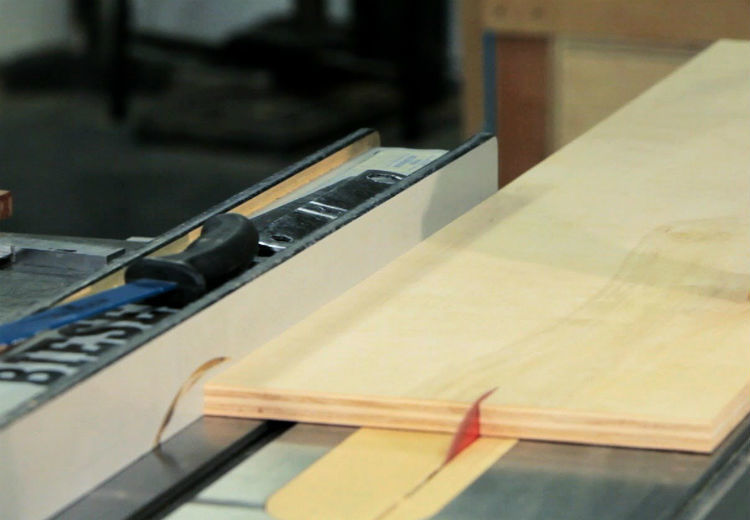
When most people think of a table saw, they think of ripping long boards (usually lengthwise) and that's about it...
Would you agree?
There are actually a few different cuts you can make with a table saw and you might be surprised when I show you some of them.
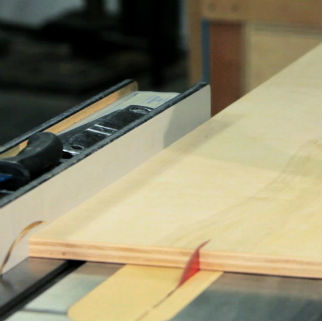
I have listed all of the most popular cuts you can achieve with a table saw and made a "mini list" type of article that lays them all out (with pictures). Hope you like it!
What Kind Of Cuts Can You Make With A Table Saw?
Table saws are capable of so many different kinds of cuts and these include: a rip cut, a cross cut, a miter cut, beveled cuts, a rabbet and a dado cut. These are all done with a table saw but the dado and rabbet cuts will usually require specialty blades, for the most effective and cleanest cut possible.
Rip Cuts Are A Table Saw's Strong Point...
Rip cuts are really a table saw's strong point and is probably the most common cut that the table saw is known for. A rip cut is basically ripping a material lengthwise, going with the grain (in most cases) and is really what the table saw shines at.
The only other tool that is capable of making rip cuts as effectively as a table saw would be the circular saw but is nowhere as fast or as accurate as a table saw. The blade that is best suited for making rip cuts with a table saw will have fewer teeth on them than a crosscut blade would.
Ripping Larger Pieces Of Wood:
Some rip cuts are made on larger pieces of material like the piece of plywood shown in the picture on the right.
The picture on the right shows a man using a cabinet saw which is the larger type and better suited for cutting larger things but can also be done on a portable table saw as well, if you have the rip capacity.

Ripping larger materials (like plywood) will be much easier with two people but if you have a larger table saw (like a cabinet model) with a very large table then you can easily do it yourself.
Ripping Smaller Pieces Of Wood:
Smaller rip cuts can also be achieved and are usually a lot more dangerous to do because the fence of the table saw has to be very close to the blade (in most cases) and you will want to use a push stick, or a couple of them in order to get the piece through safely and keep your hands out of the way.
The table saw really is a very unique tool when cutting these smaller rip cuts and nothing works as good, in my opinion.
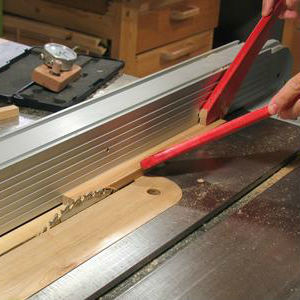
woodgears.ca
Just be sure to use extreme caution when making the smaller rip cuts on a tablesaw and be sure you keep your hands out of the way and to wear proper protection for your face because pieces can actually fly back at you (very quickly) if it catches the blade wrong.
Did You Know That Cross Cuts Are Also Possible?
Cross cuts on a table saw are not as easy to do on a table saw as they are on a miter saw or a chop saw but it can still be done if you know how to do it and use caution (a more dangerous cut).
A cross cut is probably one of the most common types of cuts that you will ever use when it comes to any type of woodworking and even metal working, for that matter.
A table saw can actually make these cuts in a similar fashion that the picture on the right illustrates and will work for making those quick cuts and without having to use another tool to do so.
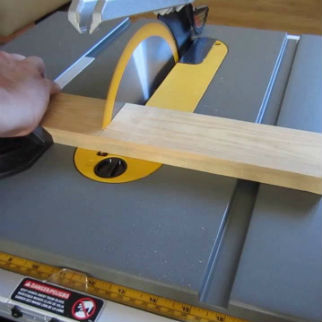
There are a few things that you need to keep in mind when crosscutting any type of material on a table saw and I found a really good article on family handyman that illustrates these points in better detail that I think you should read if you are going to be doing any type crosscutting with a tablesaw.
Cross cutting on a table saw will have a good possibility of having the piece you cut off kicking back on you, so you will want to use extreme caution when using a table saw to make any cross cuts.
Using A Cross Cut Jig/Sleds: Sometimes it would be worth your while to make some sort of a cross cut jig or sled, especially if you plan on making a lot of crosscuts using a tablesaw instead of a miter saw. These can come in many different forms but are usually custom-made and are pretty easy to make, just grab a good tutorial online and use that to make your own.
These are basically a stationary piece of wood that is clamped to the miter gauge and creates a backing for the wood, like you'd find on a miter saw and makes the process a lot safer and much more efficient. Using these will also increase your accuracy because you can match up your cutline with the precut slot in the crosscut jig or sled.
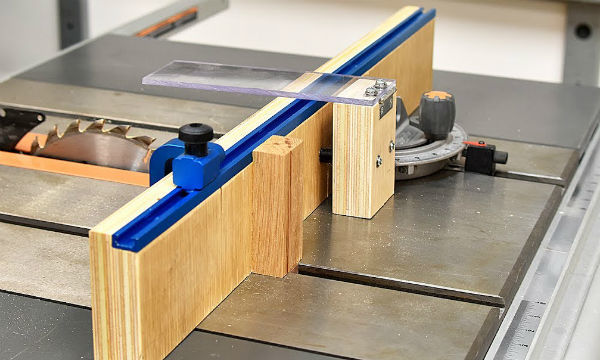
A Table Saw Jig For Cross Cutting
Miter Cuts Are Up Next And Can Be Helpful...
Miter cuts can really come in handy for many different projects and a table saw can actually cut these as well, when used in conjunction with the miter gauge.
Again, the table saw would probably not be my first choice to make miter cuts but it is possible to use one if it is the only tool you own or if you just like using it!
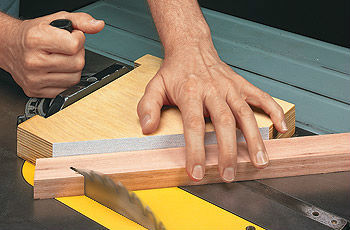
woodsmithtips.com
The miter gauge is going to be critical for doing any type of miter cuts and is actually what the miter gauge is all about when it comes to a tablesaw. You set the angle of your miter gauge, slide the workpiece onto the miter gauge and clamp it down (if needed) and you are ready to go!
Beveled Cuts Are Yet Another Type Of Cut You Can Do!
Beveled cuts are another type of pet you can achieve on a table saw and if you're ripping really long bevels than the table saw is the only way to go. It is more accurate than a circular saw and a lot more efficient too, saving you time in the process.
You can achieve a bevel cut by simply beveling the blade, which most tablesaw's have a maximum bevel of at least 45°, some having even a wider range.
You can make a bevel cut using either a crosscut or rip cut but the beveled rip cut is going to be where the table saw is really going to show its strengths. In order to use the table saw to make a beveled crosscut, you would have to use the miter gauge again.
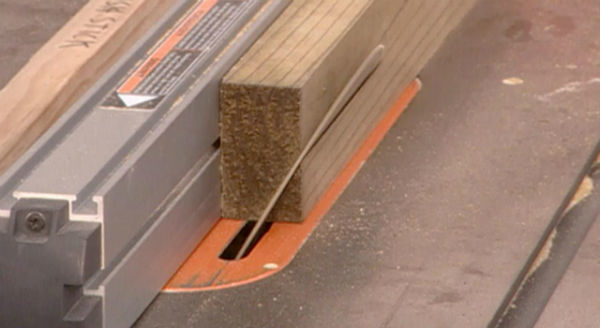
A Dado Cut Is Another Specialty For The Table Saw...
Dados cuts come in very handy, especially for furniture making, cabinetmaking and other aspects of woodworking that require precise fitting of two or more pieces together.
I wrote a more detailed post on what dado blades are and what they do but in general, they make a much wider cut then you would normally get using a single saw blade and they make more of a channel or groove in the piece when it is all said and done.
You will need to use special dado blades in order to get a dado cut and these are easily accessible just about anywhere online, even Amazon and can open up a whole new world with your table saw.

instructables.com
Rabbet Cuts Are Possible Too?
A rabbet cut can also be achieved by using a dado blade but only taking off the material around the edges of the board, either the end or one of the sides. Depending on which side of the board you are cutting, you will either be using the fence or the fence and miter gauge to achieve a rabbet cut.
These are also very popular in the cabinet making and woodworking projects sector and is nearly always use for joining two pieces of wood together. The illustration below will give you a pretty good idea of how to make a rabbet cut and what it looks like when it's all finished up.


